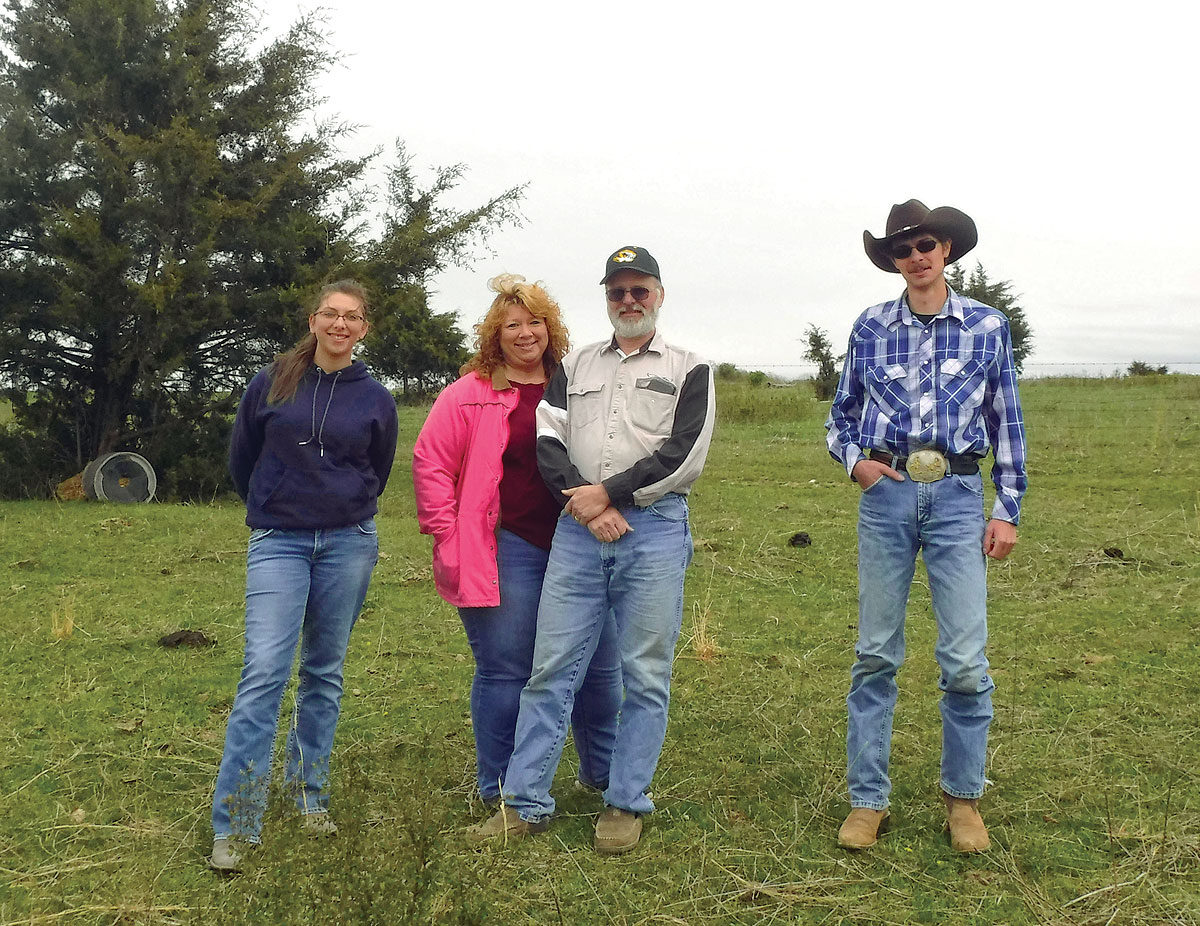
Dorsey and Kathy Demott will be the first to admit their registered Balancer cows are spoiled.
On 120 acres in rural Pulaski County, Mo., between Richland and Crocker, they have approximately 30 momma cows and at the moment, a dozen calves. Kathy’s favorite is a calf she has bottle fed from birth named Rosebud.
“She was one of a pair of twins and the momma would not accept her, so I took care of her,” she said as she rubbed the calf’s head, which both seemed to enjoy.
“I like the Balancer, the Gelbvieh with the Angus,” Dorsey added, getting down to the serious business of cattle production. “I bought half my herd from Neosho Mo., the red and the black half from Freeburg, Mo. I run both red and black so I can follow the market either way. I have a really young herd, all first time heifers, averaging 6 to 7 years old. I have a few that are only 4 years old and one of the best bulls ever, from Freeburg. I like using the Balancer bulls that are 75 percent Angus and 25 percent Gelbvieh, to get the muscling. The Gelbvieh are particularly docile and produce lots of milk so that helps provide stability.”
Dorsey said a recently-sold group of calves did very well for him.
“I’m just doing commercial right now, but they bring high dollar,” he said. “I’ve also done registered bulls in the past and will probably go back to that again soon. Sometimes, my neighbors ask me to sell to them and I usually end up selling to them as well.
“I like to sell as good a quality as I possibly can. I’m pretty picky about the EPDs for all the cattle, especially the bulls. Everyone is moving toward the EPDs, so much so that you know the EPDs on a calf even before its born, what with the bull’s and cow’s birth weight, weaning weight, and the yearling weight – it all plays into it. I know in 180 days, mine will be 600 to 650 pounds. It costs more up front, but it pays off later. The feed lots want the cross in cattle and they do better, with calving ease. The female calves run 45 to 50 pounds and the bull calves 55 to 60 pounds, but that avoids any calving problems. A live calf is worth more than a dead one and while they may be a bit smaller to start, they catch up fast.
“Of course, your forage has a lot to do with it, too. All of my land is in pasture so I buy good quality hay. That works out better for me, rather than raising my own hay. I also rent 40 acres occasionally to wean calves. The truth is I’m still learning as I go.”
Dorsey has worked for McGuire Performance Center in Lebanon, Mo., as a mechanic for more than 20 years and Kathy worked for H.D. Lee’s, Quality Manufacturing of Richland, Mo., which made windows, and Dowco in Lebanon.
Cattle have run through several generations of Dorsey’s family and he says he also owes a debt of thanks to friends and neighbors who have been more than willing to help him through the years. He and Kathy live in the house where he was raised.
“This place was homesteaded through my mother’s family,” he added. “Parts of this house are probably 200 years old. I don’t know exactly what the original acreage was and I’ve never done the Century Farm thing. I know this farm has been 120 acres since the 1930s. My dad, Dorsey W. Demott Sr., had milk and beef cows both here. I grew up around it and although I quit for a while, I’m glad to be back at it.”
For the Demott’s quality his the main priority.
“I keep all cows wormed and vaccinated and I don’t use any growth hormones,” Dorsey said. “The result is I don’t have any sickness and that’s the important part. This is basically our retirement and I really enjoy the cattle.”
In a very real sense, Dorsey has come home to the life in which he started, raising cattle and the best news is that he and his wife are both enjoying it thoroughly.







